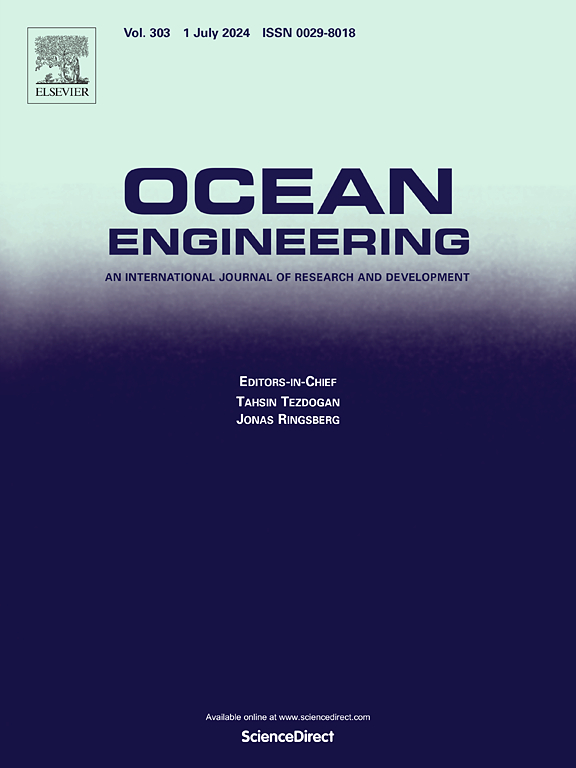冲刷维度的增强预测:使用FFNN、CatBoost和XGBoost模型的湍流平面壁面射流引起的时间变化
IF 5.5
2区 工程技术
Q1 ENGINEERING, CIVIL
引用次数: 0
摘要
湍流壁面射流冲刷是水工工程中一个相当大的挑战,影响着相邻结构的稳定性。准确预测冲刷尺寸随时间的变化对于设计安全有效的液压系统至关重要。这项工作通过使用先进的机器学习(ML)方法来提高预测的准确性来解决这个问题。三个ML模型- catboost, XGBoost和前馈神经网络(FFNN) -使用几个指标进行评估,包括均方差(MSE),决定系数(R2),平均绝对误差(MAE),平均绝对百分比误差(MAPE)和Willmott指数(WI)。结果表明CatBoost具有最好的预测准确性,紧随其后的是XGBoost。两种基于树的集成模型都优于所检查的FFNN架构,但每个模型的R2值都超过0.8。通过5重交叉验证和学习曲线分析验证了模型的泛化能力和预测一致性。训练集和验证集之间的性能差异很小,表明鲁棒泛化没有过拟合的迹象,而输入噪声下的鲁棒性测试表明,尽管模拟测量不确定,模型预测仍保持准确性。敏感性分析显示,预测hm/D、xd/D和ys/D最显著因素的相关评分分别为0.34、0.45和0.33。参数Yt/D对预测xs/D最显著,得分为0.33。这些结果验证了CatBoost和XGBoost优于传统方法,并突出了可靠的输入参数选择对于精确估计冲刷孔直径的重要性。本文章由计算机程序翻译,如有差异,请以英文原文为准。
Enhanced prediction of scour dimensions: Temporal variations induced by turbulent plane wall jets using FFNN, CatBoost, and XGBoost models
Turbulent wall jet-induced scours provide a considerable challenge in hydraulic engineering, impacting the stability of adjacent structures. Precisely forecasting variations in scour dimension over time is crucial for the design of safe and effective hydraulic systems. This work tackles this problem by using advanced machine learning (ML) approaches to enhance predictive accuracy. Three ML models—CatBoost, XGBoost, and a feedforward neural network (FFNN)—were assessed using several metrics, including Mean Squared Error (MSE), coefficient of determination (R2), Mean Absolute Error (MAE), Mean Absolute Percentage Error (MAPE), and Willmott Index (WI). The findings indicated that CatBoost had the best predictive accuracy, closely followed by XGBoost. Both tree-based ensemble models surpassed the examined FFNN architecture, but every model had R2 values over 0.8. The examination of the model by 5-fold cross-validation and learning curve analysis validated its generalization capabilities and prediction consistency. The little performance disparity between training and validation sets suggested robust generalization without signs of overfitting, while robustness testing under input noise demonstrated that model predictions retained accuracy despite simulated measurement uncertainty. Sensitivity analysis indicated that the most significant factors for forecasting , , and had relevance ratings of 0.34, 0.45, and 0.33, respectively. The parameter Yt/D was shown to be the most significant for predicting , with a score of 0.33. These results validate that CatBoost and XGBoost surpass traditional methods and highlight the importance of reliable input parameter selection in precisely estimating scour hole diameters.
求助全文
通过发布文献求助,成功后即可免费获取论文全文。
去求助
来源期刊

Ocean Engineering
工程技术-工程:大洋
CiteScore
7.30
自引率
34.00%
发文量
2379
审稿时长
8.1 months
期刊介绍:
Ocean Engineering provides a medium for the publication of original research and development work in the field of ocean engineering. Ocean Engineering seeks papers in the following topics.
 求助内容:
求助内容: 应助结果提醒方式:
应助结果提醒方式:


